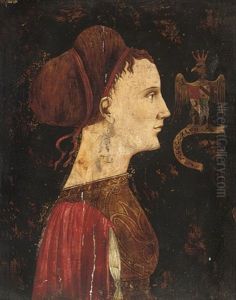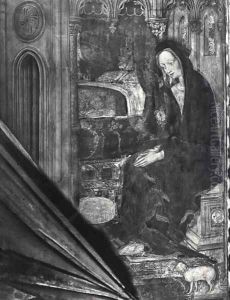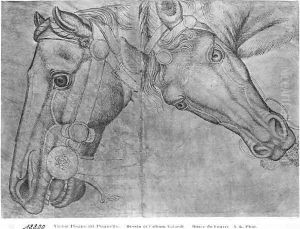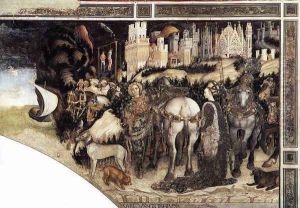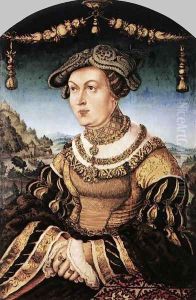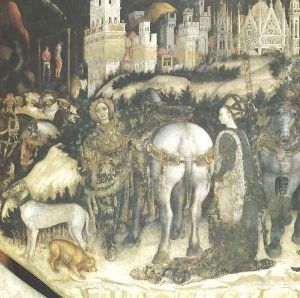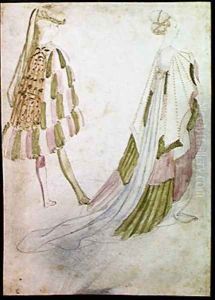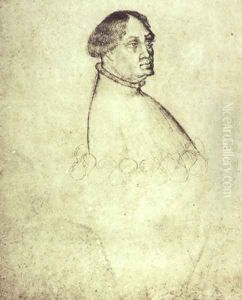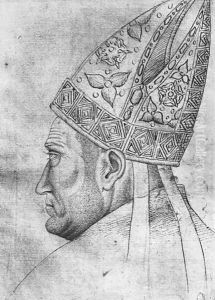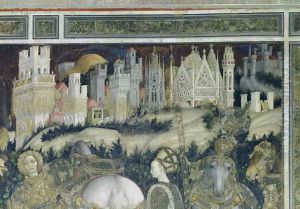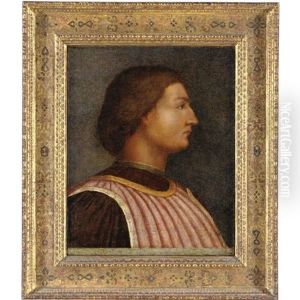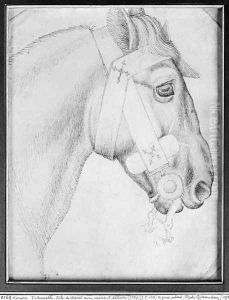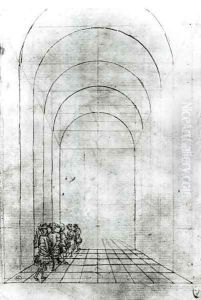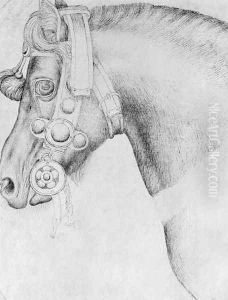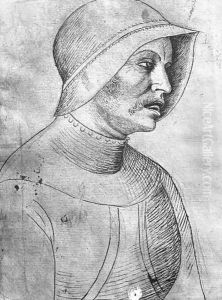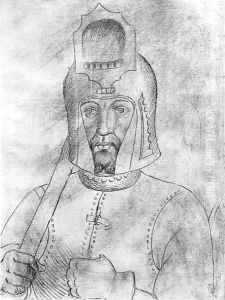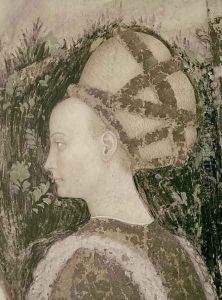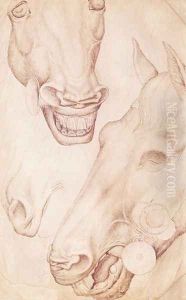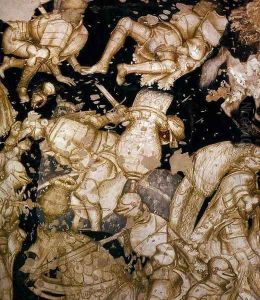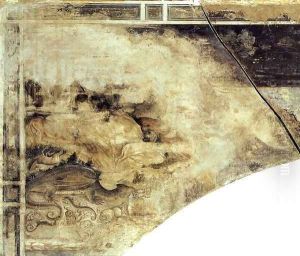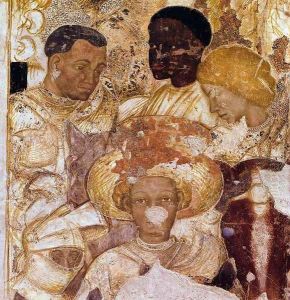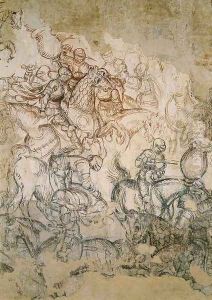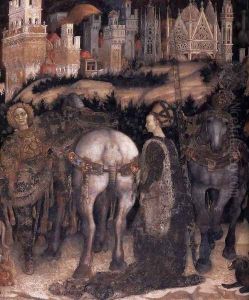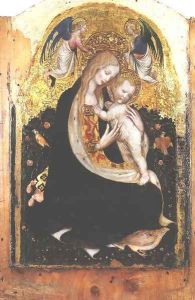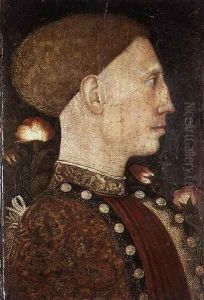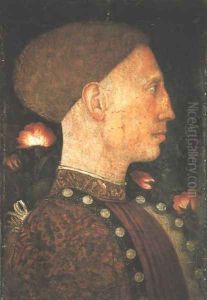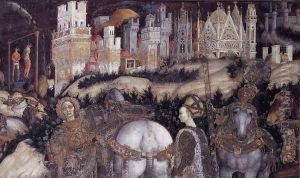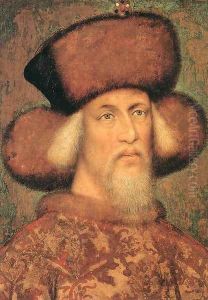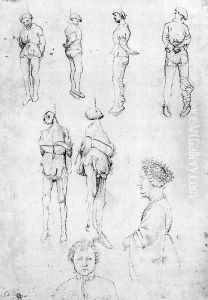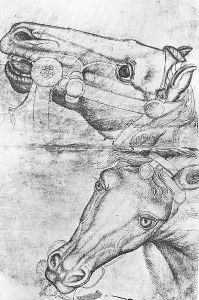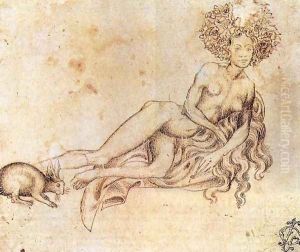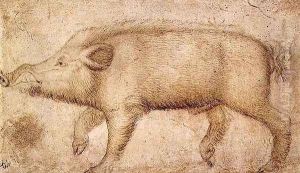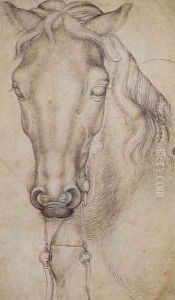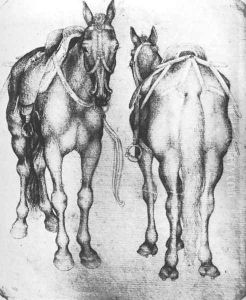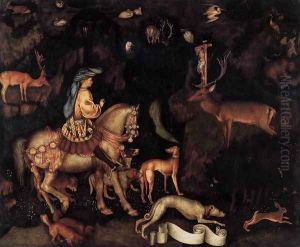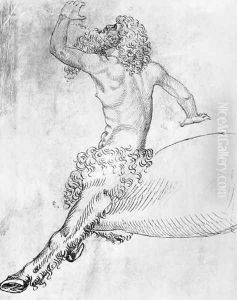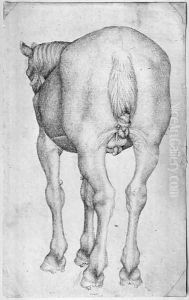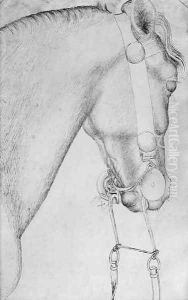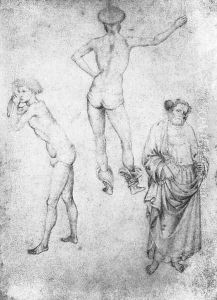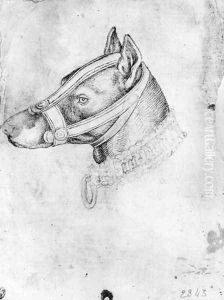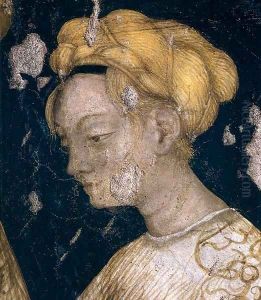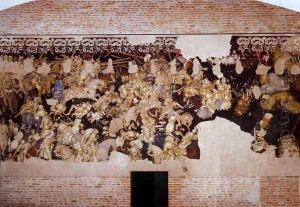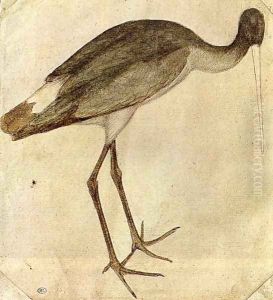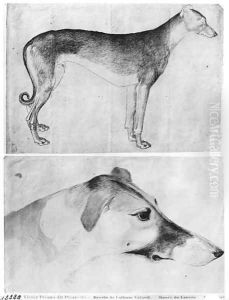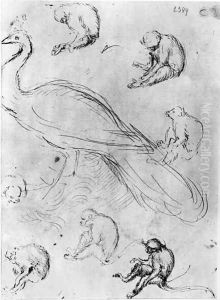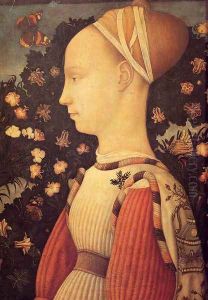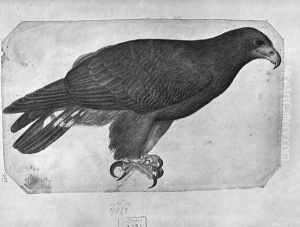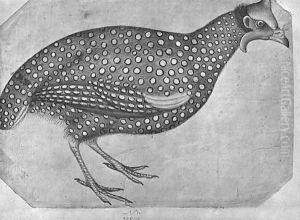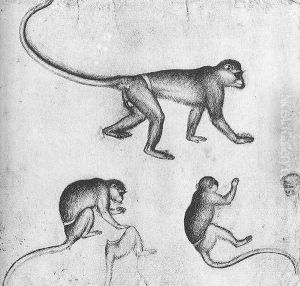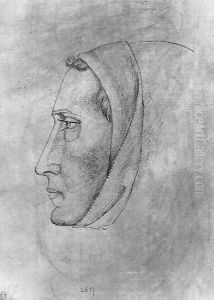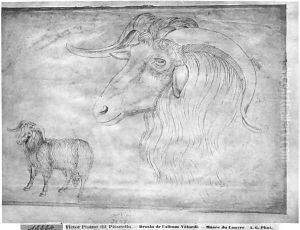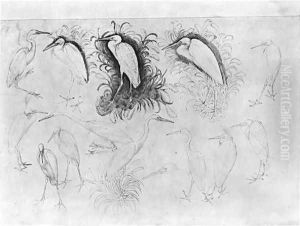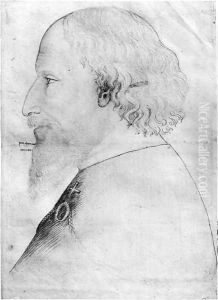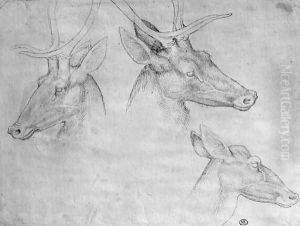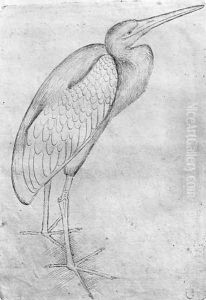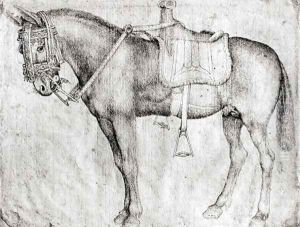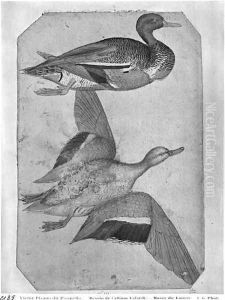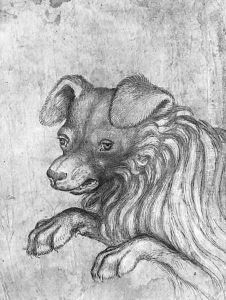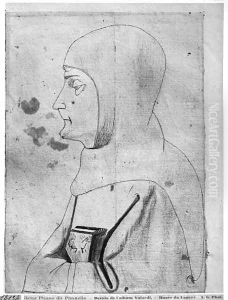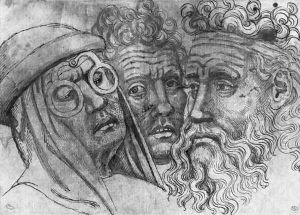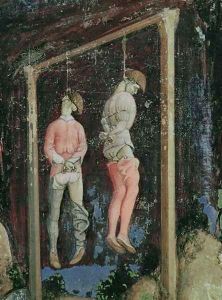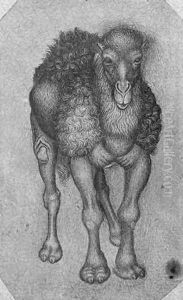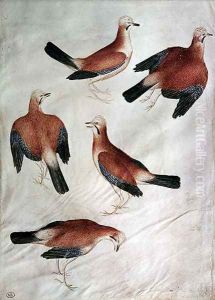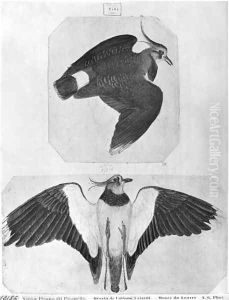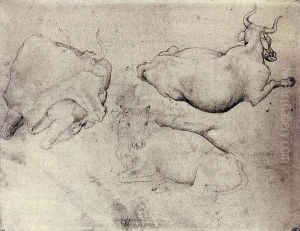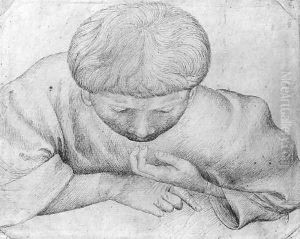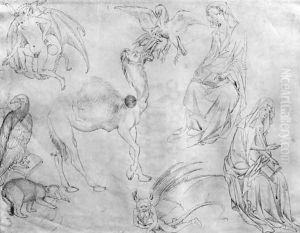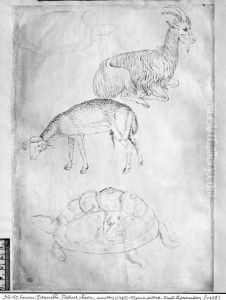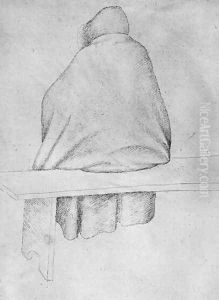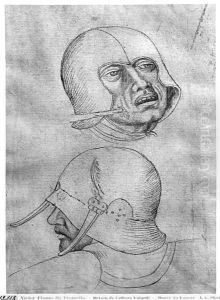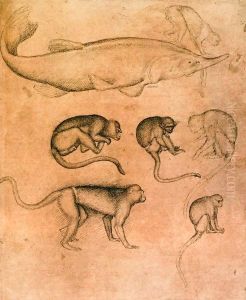Antonio Pisano (Pisanello) Paintings
Antonio Pisano, more commonly known as Pisanello, was one of the most notable Italian painters and medalists of the early Renaissance period. Born around 1395 in Pisa or Verona, Pisanello showed a remarkable talent for the arts from an early age. He initially trained within the Veronese school and was deeply influenced by the works of his contemporaries, including Gentile da Fabriano.
Pisanello's career spanned a period during which the Gothic style was transforming into the Renaissance, and his work reflects this transition. He is particularly renowned for his portraits and the detailed studies of animals and nature. Pisanello's ability to capture the essence of his subjects with delicate precision and his use of vibrant color made him a favorite among the courts of Italy.
Around 1420, Pisanello worked in Venice and then moved to Rome in 1422, where he worked with Gentile da Fabriano on frescoes in St. John Lateran. Unfortunately, much of Pisanello's mural work has not survived, but his drawings and medals continue to be highly valued by collectors and art historians. From 1430 onwards, he traveled across various Italian city-states, including Ferrara and Mantua, working for powerful patrons such as the Este and Gonzaga families.
One of Pisanello's most famous works is the fresco of St. George and the Princess in the Pellegrini Chapel of the Church of Sant'Anastasia in Verona. He is also known for his medals, which are considered some of the finest examples of the medium from the Renaissance period. These medals often featured portraits of his patrons and were inscribed with intricate detail.
Pisanello's art is characterized by its courtly elegance and minute attention to detail. His work in portraiture was innovative for its time, presenting subjects with a naturalism and individuality that would later become a hallmark of Renaissance art. His drawings, often executed in pen and ink, reveal his keen observation skills and his fascination with the natural world, particularly in his studies of animals, which he used as preparatory work for larger commissions.
Pisanello's influence was significant during his lifetime, and he is credited with contributing to the development of the portrait medal, a genre that would become popular throughout Europe. His legacy continued to be felt long after his death, which is believed to have occurred around 1455. Today, Pisanello's work can be found in major museums around the world, and he remains a respected figure in the history of art for his contributions to the evolution of Renaissance portraiture and medal-making.
